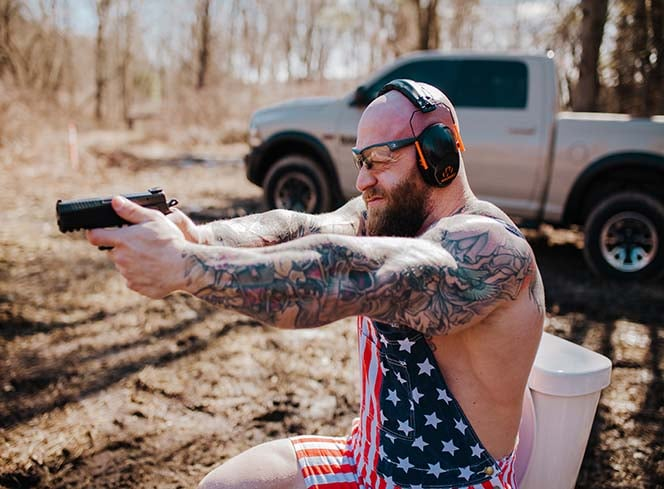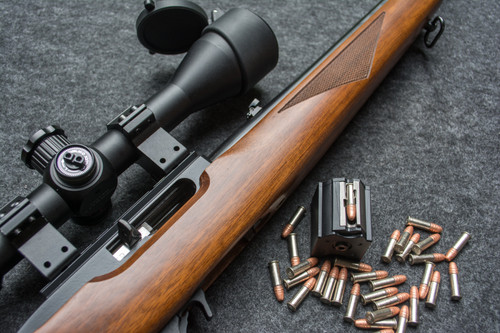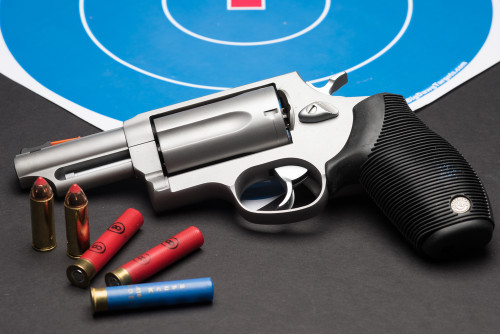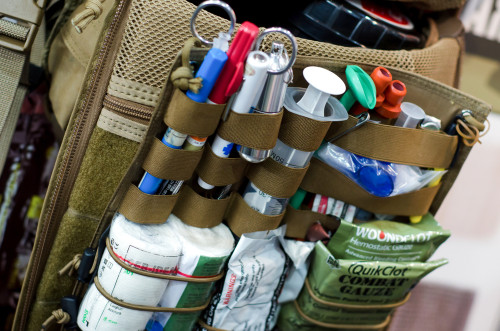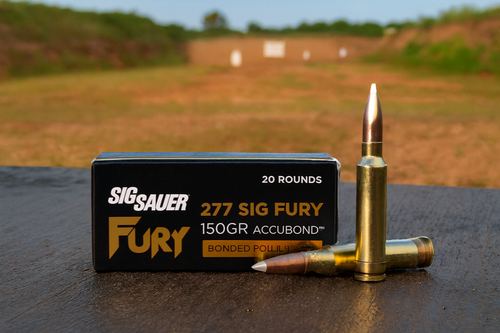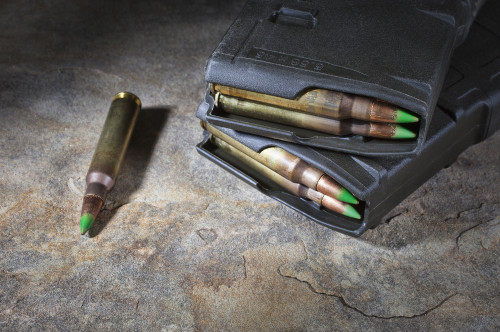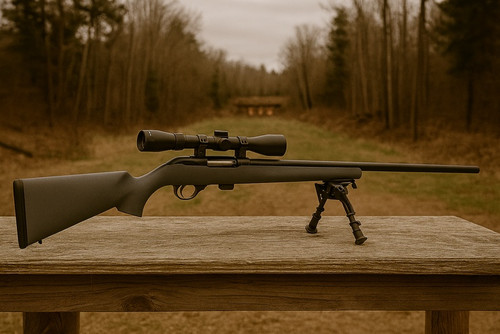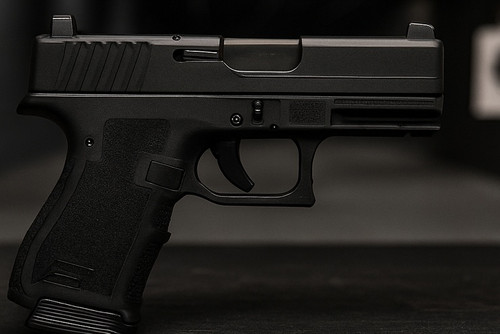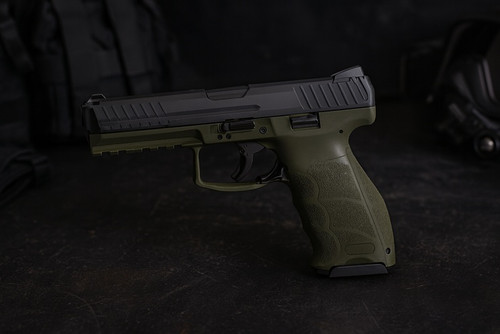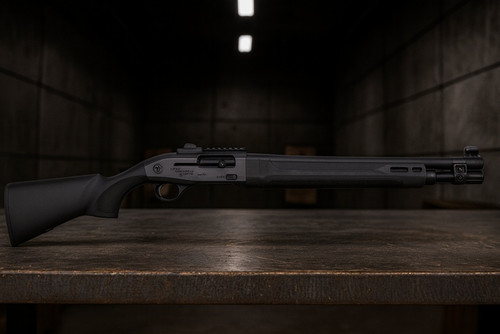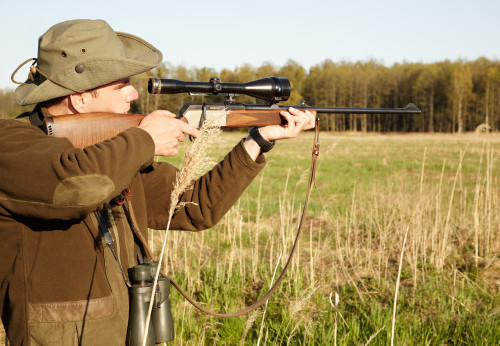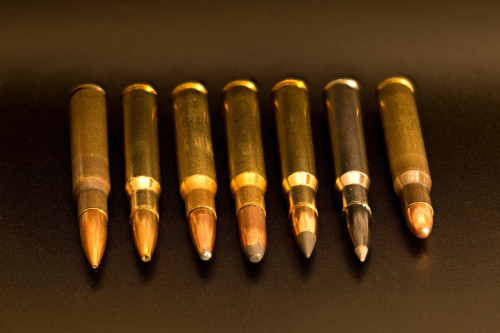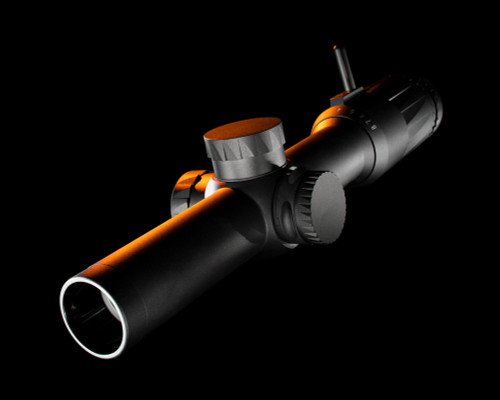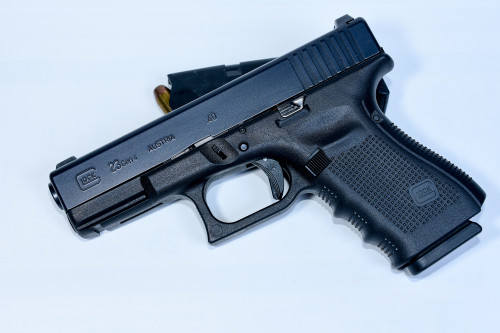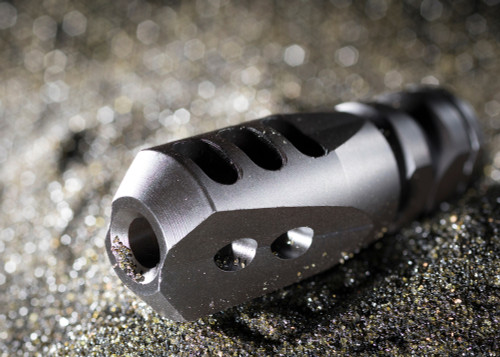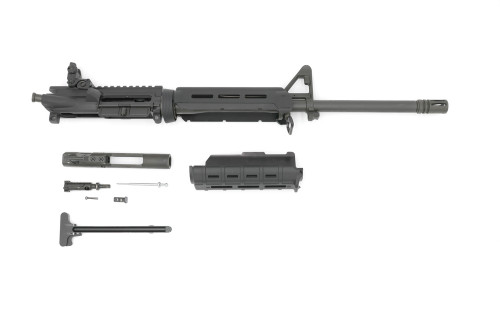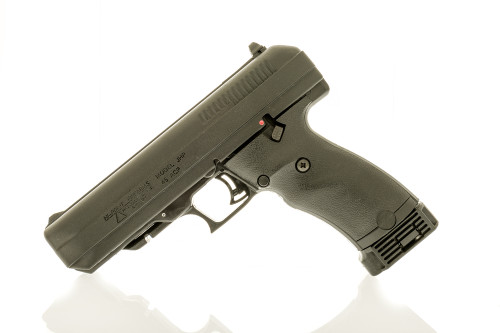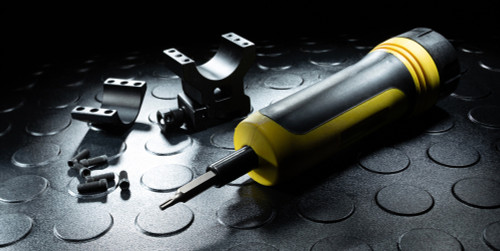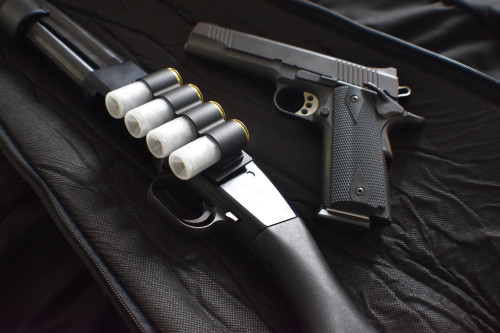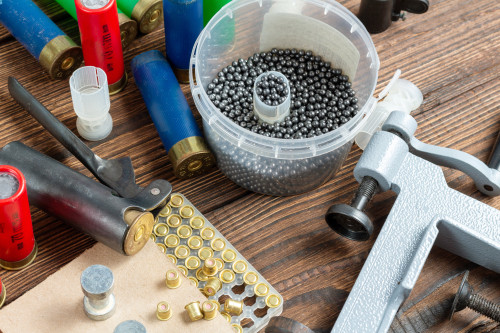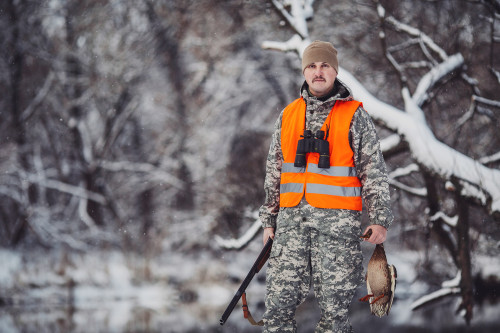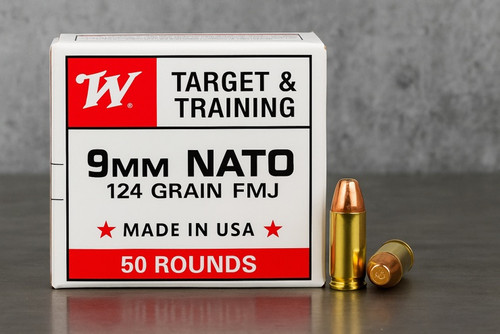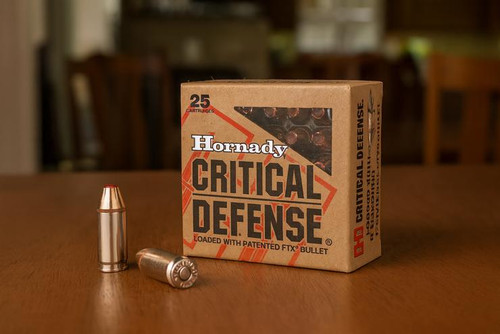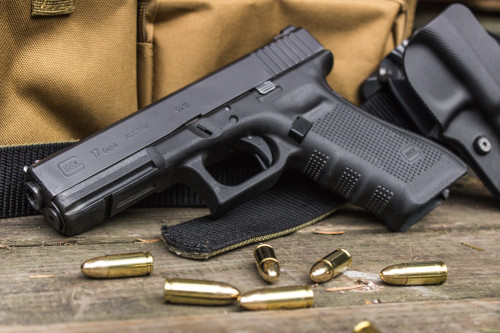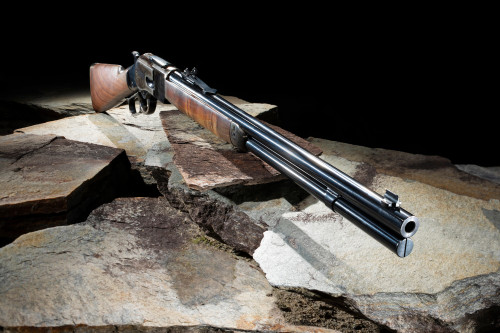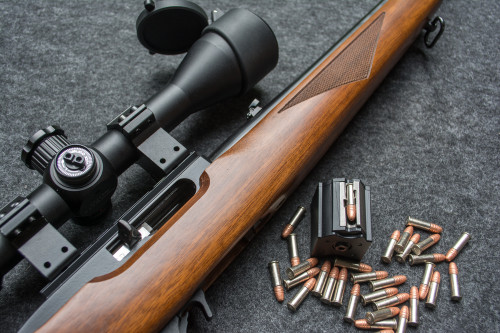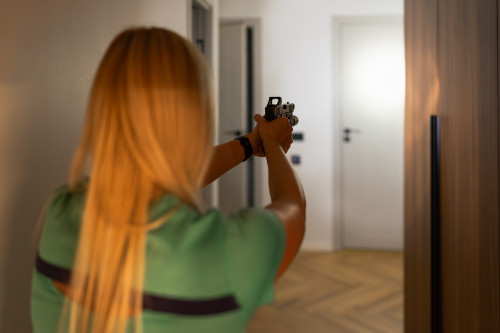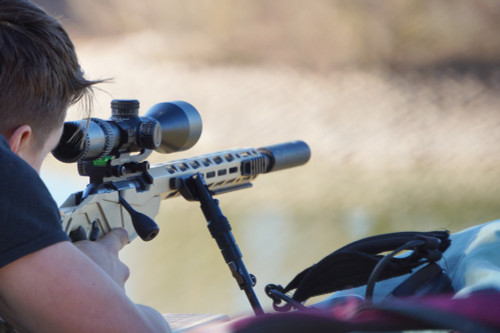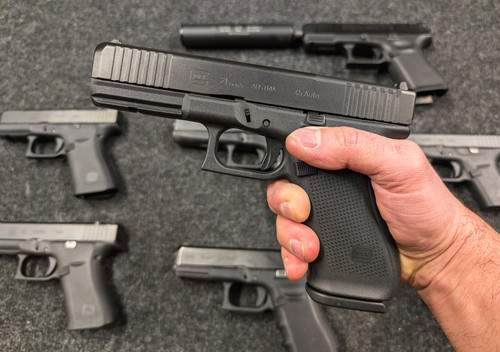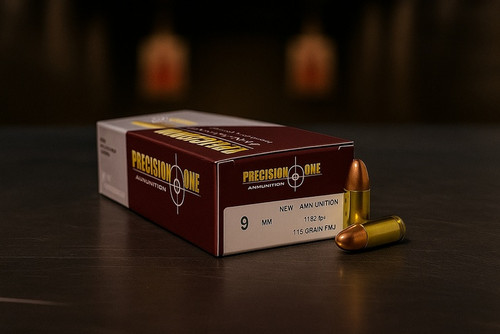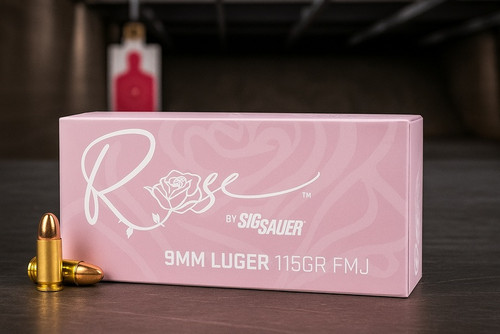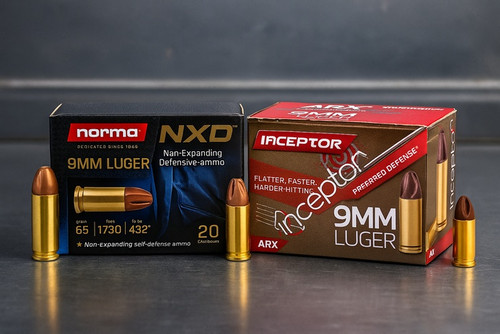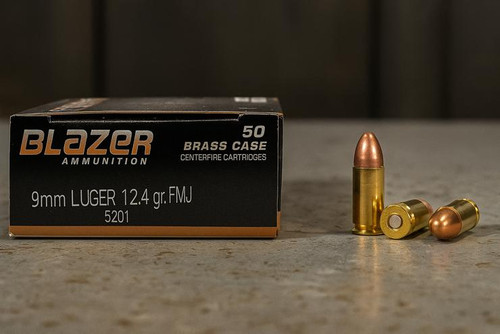Ever tried hitting a target at 300 yards without any support? Your arms start shaking after about ten seconds. That's where a good bipod comes in handy.
The right bipod can make the difference between a clean shot and a complete miss. But the thing is that not all bipods are created equal. Some work great for light rifles. Others can handle the heaviest magnums without breaking a sweat.
After researching dozens of models and gathering feedback from experienced riflemen, hunters, and competitive users, we've put together this guide to help you find the perfect bipod. We'll cover everything from budget-friendly options to premium models that cost more than some rifles.
The goal here is simple. Help you understand what makes a great bipod. Then show you eight solid options that actually work in the real world.
How We Chose the Best Rifle Bipods
Finding the best bipods isn’t just about reading spec sheets. But it’s about understanding how they perform in practical settings. Our recommendations are built on Pro-Armory’s team insights drawn from years in the military, competitive shooting circuits, time spent in gun shops, and extensive online research and community feedback.
We didn’t test the bipods ourselves, but we prioritized long-term durability based on reports from real users who’ve run thousands of rounds through their setups. Nobody wants a bipod that fails after one hunting season.
We also looked closely at adjustability features. Ease of height adjustment, one-handed operation, and whether the mechanism holds under recoil were all factors gathered through secondary research and firsthand accounts from experienced shooters.
Mounting compatibility was another major factor. Some models only fit Picatinny rails, while others require adapters. We ensured our list includes a variety of mounting solutions to match different rifle platforms.
Price-to-value ratio played a key role. While some high-end models exceed $600, we focused on options that offer real-world performance at more accessible price points.
Recoil stability was critical too. We reviewed user feedback from those firing everything from .223 to .300 Win Mag to understand which bipods maintain their position during demanding use.
All selections were guided by compiled reviews, forum discussions, and conversations with experienced riflemen—not manufacturer marketing claims.
A bipod is just one of several upgrades that can transform your rifle’s performance. If you’re building or refining an AR platform, our AR-15 setup guide walks through the other essential accessories that complement a bipod
8 Best Rifle Bipods
1. MDT CKYE-POD Gen 2 – Most Adjustable Bipod

The MDT CKYE-POD Gen 2 stands at the top of the precision rifle world. This isn't just another bipod it's what happens when engineers listen to competitive riflemen and build exactly what they ask for. The adjustability on this thing is simply unmatched by anything else on the market.
Professional competition people love this bipod for good reason. It offers an incredible range of adjustments that can be made quickly and precisely. The height range goes from 4.5 inches all the way up to 15.5 inches. That covers just about any shooting position you'll ever encounter.
What really sets the CKYE-POD apart is the independent leg adjustment feature. Each leg can be set to a different height. This makes shooting on uneven ground much easier. No more trying to balance your rifle on rocks or logs.
The build quality matches the price tag. MDT designed this bipod to handle serious abuse from competition use and hunting in rough conditions. Users report that these bipods keep working smoothly even after years of heavy use in all kinds of weather.
Price: Starts at approx. $599 (varies by model and vendor)
Features
- Height adjustment: 4.5" to 15.5"
- Independent leg adjustments
- 360° pan and 170° cant
- Quick deploy with spring-loaded legs
Pros
- Best-in-class adjustability
- Extremely stable and rugged
- Customizable tension controls
Cons
- Very expensive
- May be overkill for casual use
2. Harris Engineering 1A2-LM – Best Budget Bipod

The Harris 1A2-LM has been around forever. There's a good reason for that: it just works. This bipod has introduced more people to precision shooting than probably any other model. It's affordable, simple, and gets the job done.
For new rifle owners, the Harris offers an excellent introduction to bipod shooting. The learning curve is gentle. Mount it, adjust the legs, and start shooting. No complicated features to figure out. No expensive mistakes if you drop it or knock it around.
The construction is solid for the price point. Harris uses a mix of steel and aluminum that keeps weight reasonable but still provides good stability. The spring-loaded legs deploy quickly and lock into place securely. Users often keep these bipods for years without any problems.
Budget-conscious hunters and range shooters may find this bipod perfect for their needs. It works well on AR-15s and lighter bolt guns. The 9-13 inch height range covers most shooting situations. And if something does break, replacement parts are cheap and easy to find.
Price: $103
Features
- Adjustable legs (9"–13")
- Spring-loaded deployment
- Solid steel/aluminum construction
Pros
- Affordable and dependable
- Lightweight
- Easy to mount on most rifles
Cons
- Lacks modularity
- Not as durable under heavy recoil
3. Spartan Precision Valhalla – Best Modular Bipod

The Spartan Valhalla came about through collaboration with Norwegian special operations. That means it was designed by people who actually need their gear to work in harsh conditions. The result is a bipod that combines quick deployment with serious durability.
The standout feature here is the modular mounting system. Instead of being permanently attached, the Valhalla uses a spigot adapter system. You mount a small adapter to your rifle. Then the bipod clicks into that adapter when needed. This means you can remove the bipod completely when you don't need it.
Why does this matter? Bipods add weight and bulk to the front of your rifle. Sometimes you want that stability. Other times you want the rifle as light and handy as possible. The Valhalla gives you both options. The adapter weighs almost nothing once the bipod is removed.
The construction quality is excellent. Spartan uses 7075 aluminum with a hard-anodized finish. The tungsten carbide feet grip well on most surfaces. The synthetic boots that slip over the feet help protect shooting surfaces and reduce noise. Users report that the adjustment mechanisms stay smooth and tight even after extensive use.
Price: $429
Features
- 7075 aluminum with hard-anodized finish
- Spring-loaded legs with one-hand adjustment
- Tungsten carbide feet with removable boots
Pros
- Quick attach/detach system
- Lightweight and rugged
- Interchangeable mounting adapters
Cons
- Expensive for non-tactical users
- Legs aren't notched for precision leveling
4. Magpul Bipod – Best Lightweight Bipod

Magpul took a different approach with their bipod design. Instead of going all-metal like most companies, they used a hybrid of aluminum and polymer. The result is a bipod that's significantly lighter than most competitors but still plenty strong for normal use.
The weight savings really add up during long hunting trips or competition matches. At just 11 ounces, this bipod won't tire you out like heavier models. The polymer construction also helps dampen vibrations slightly. Some users notice less bounce under recoil compared to all-metal designs.
Magpul offers this bipod in multiple mounting configurations. You can get it for M-LOK, Picatinny rails, or A.R.M.S. 17S systems. This covers most modern rifles without needing adapters. The clean design also looks good on both tactical and hunting rifles.
The height range of 6.3 to 10.3 inches works well for most shooting positions. When we start talking about the legs on this bad boy, they deploy so smoothly and lock securely it is impressive. Users appreciate how easy this bipod is to operate. Even folks with gloves on can adjust it quickly. The price point makes it accessible to most rifle owners.
Price: $104
Features
- Height range: 6.3"–10.3"
- Available in M-LOK, Picatinny, and 17S mounts
- Rubber feet with grip
Pros
- Lightweight and affordable
- Strong construction for its class
- Multiple color and mounting options
Cons
- Feet not ideal for rough terrain
- Limited in height range
5. ACCU-TAC FD-4 Arca Spec QD – Best Arca-Mount Bipod

The ACCU-TAC FD-4 targets precision rifle users who've already invested in Arca rail systems. This bipod integrates seamlessly with that ecosystem. It's built like a piece of precision machinery rather than just a support tool.
The Type III hard anodized aluminum construction feels solid and precise. Every adjustment mechanism operates smoothly. The button-operated leg extensions are particularly clever. Instead of twisting or pulling to extend the legs, you just push a button. This makes height changes much faster.
What really impresses users is the attention to detail. The cant lock lever is large and easy to operate even with gloves. The legs can be positioned at different angles for irregular shooting positions. Five different notches provide plenty of height options for various scenarios.
The customizable foot system sets this bipod apart from many competitors. ACCU-TAC offers claws, spikes, skis, and other specialized feet. This lets you optimize the bipod for your specific shooting environment. Match competitors love being able to swap feet between stages.
Price: $384
Features
- Five-notch elevation with button retraction
- Lockable cant via large side lever
- Multiple foot options (claws, skis, etc.)
Pros
- Durable Type III hard anodized build
- Smooth deployment and retraction
- Custom foot compatibility
Cons
- Expensive
- Not suitable for rifles without Arca mounts
6. Elite Iron Rev Lution – Best Heavy-Duty Bipod

Some users need a bipod that can handle absolutely anything. The Elite Iron Rev Lution exists for those people. This is what you buy when normal bipods just aren't tough enough for your application.
The all-steel construction means this bipod weighs 34 ounces. That's heavy by modern standards, but it also means you could probably use it as a club if you ran out of ammunition. Users who shoot big magnums report that this bipod doesn't budge under recoil that would bounce other models around.
The 360-degree rotating legs make this bipod incredibly adaptable. You can shoot from weird angles that would be impossible with conventional designs. The legs lock securely at any angle. This makes it popular with hunters who need to shoot from awkward positions.
The price reflects the specialty nature of this bipod. At over $600, it's definitely not for everyone, but users who need maximum durability and stability find it worth every penny. This is the bipod you buy once and use for decades without worrying about breaking it.
Price: $635
Features
- 34 oz weight
- Full steel body, no exposed springs
- Locking leg mechanism
Pros
- Exceptionally stable
- Great for large calibers
- Handles rough conditions easily
Cons
- Extremely heavy
- Very high price point
7. GG&G XDS-2 Tactical Bipod – Best Mid-Range Option

The GG&G XDS-2 fills the gap between budget Harris bipods and premium Atlas models. It's made in the USA with good materials and solid engineering. Users often compare it favorably to much more expensive options.
The build quality exceeds what you'd expect at this price point. GG&G uses quality aluminum and steel components that hold up well over time. The adjustment mechanisms operate smoothly and maintain their settings under recoil. This bipod has earned a good reputation among tactical users.
The independent leg control allows for quick adjustments on uneven terrain. Each leg can be set to a different height without affecting the other. This makes it much easier to get a stable shooting position on irregular surfaces. The range of adjustment covers most practical shooting scenarios.
Installation is straightforward on rifles with Picatinny rail systems. The mounting hardware is solid and holds the bipod securely. Users appreciate that this bipod stays tight over time. Some cheaper models develop play in the mounting system after extended use. The GG&G doesn't have that problem.
Price: $229
Features
- Independent leg control
- Fits Picatinny rails
- Durable aluminum and steel parts
Pros
- Solid build for the price
- Trusted by tactical users
- Smooth adjustment range
Cons
- No notched legs
- Slower to adjust when prone
8. Atlas CAL Gen 2 BT65-LW17 – Editor's Pick

The Atlas CAL Gen 2 represents the sweet spot between performance and price. It offers most of the features that serious rifle users need without the premium cost of top-tier models. The CAL (Cant And Lock) system eliminates panning for added stability.
Atlas designed this bipod specifically for users who prioritize stability over tracking ability. By removing the pan function, they created a more rigid platform. This makes the bipod excellent for precision work where you need maximum steadiness. The can't function still allows you to level the rifle on uneven ground.
The construction quality is excellent. Atlas uses premium materials and precise manufacturing. Users report that these bipods hold up extremely well under hard use. The quick-detach lever operates smoothly and locks securely, which lends to making the system easy to remove when the bipod is not needed.
Aftermarket support for Atlas bipods is extensive. You can find specialized feet, mounting adapters, and other accessories easily. This lets you customize the bipod for your specific needs. The height range of 4.75 to 9 inches works well for most shooting applications.
Price: $264
Features
- Height: 4.75"–9"
- Quick detach Picatinny lever
- Multiple aftermarket foot options
Pros
- Durable under harsh use
- Excellent recoil control
- High-end performance at mid-premium price
Cons
- No pan (intentional design)
- Deployment slower than Harris
Why Do You Need a Bipod?
Think about trying to hit a target at 200 yards without any support. Your muscles start shaking after just a few seconds. Your crosshairs dance all over the place. That's where a bipod saves the day.
A good bipod transforms your rifle into a much more accurate weapon. It takes the human wobble out of the equation. Instead of fighting to keep your sights steady, you can focus on trigger control and breathing. The difference in accuracy is dramatic.
Bipods also beat other support methods in practical situations. Shooting bags work great at the range. But good luck carrying them on a hunting trip. Bipods attach directly to your rifle. They're always there when you need them. They don't add bulk to your pack or get left behind.
The scenarios where bipods shine are numerous. Hunters use them for long shots across open country. Competition users rely on them for precision stages. Even casual range users find that bipods make shooting more enjoyable and accurate.
But bipods aren't just about accuracy. They also reduce fatigue during long shooting sessions. Supporting a rifle's weight with your arms gets tiring quickly. A bipod lets you shoot longer with better consistency throughout the session.
What Makes a Good Bipod?

Match to Caliber and Purpose
Not all bipods work equally well on all rifles. A lightweight bipod that's perfect for a .22 might not handle a .300 Win Mag very well. The recoil forces are just too different.
AR-15 rifles generally produce moderate recoil. Most quality bipods handle them fine. But if you're shooting rapid-fire strings, you need a bipod that won't walk around under repeated impacts. Spring-loaded legs help absorb some of that energy.
Bolt-action rifles cover a huge range of calibers, from a .243 Winchester that produces gentle recoil, to a .338 Lapua hits like a sledgehammer.Just make sure your bipod can handle whatever you're shooting. Heavy rifles need heavier, more robust bipods.
Purpose matters too. A hunting bipod needs to be lightweight and quick to deploy. A benchrest bipod can be heavier, but should offer more precise adjustments. Competition bipods need to transition quickly between different positions.
Durability and Material Quality
Bipods take a beating. Recoil forces slam them backward with every shot. Rough handling during transport can damage cheap models. Quality materials and construction make a huge difference in longevity.
Aluminum and steel construction generally outlasts polymer and pot metal, but weight becomes a factor with all-metal designs. The best bipods balance durability with reasonable weight. They use quality materials where they matter most.
Look for solid mounting systems that won't develop play over time. Cheap bipods often get loose in their mounts after extended use. This ruins accuracy and makes the bipod feel sloppy. Quality mounting hardware stays tight shot after shot.
Finish quality affects both appearance and durability. Hard anodizing protects aluminum parts from wear and corrosion. Quality steel components resist rust and maintain smooth operation. These details matter during years of use.
Height Adjustability
Different shooting positions require different bipod heights. Prone shooting generally needs shorter legs. Shooting from a bench often requires taller ones. The best bipods offer a good range of adjustment.
Most bipods adjust between 6 and 9 inches. This covers basic needs for most users, but some situations require more range. Shooting over obstacles or from irregular positions might need legs that extend to 15 inches or more.
Quick adjustment is important too. You don't want to spend five minutes fiddling with leg length when a shot opportunity presents itself. Spring-loaded legs with simple controls work best for most applications.
Independent leg adjustment adds another level of capability. Each leg can be set to a different height for uneven ground. This feature helps a lot when shooting from natural positions rather than flat benches.
Leg Features
Spring-loaded legs deploy much faster than manually extended ones. A quick flip of a lever and the legs snap into position. This speed matters during hunting or competition scenarios where time is limited.
Notched legs provide more precise height control. You can set both legs to exactly the same length for perfect leveling. Smooth legs adjust more continuously but can be harder to match precisely. Choose based on your priorities.
Leg stiffness affects stability. Some bipods have legs that compress slightly under load. This can cause the point of aim to shift when you apply forward pressure. Stiffer legs maintain their position better but might transmit more vibration.
The leg locking mechanism needs to be secure and easy to operate. Twist locks also work well but can be slow. Lever locks can operate faster but might not hold as securely. Button releases are also quick but require good design to stay locked under stress.
Feet Types
Bipod feet contact the ground and determine how well the bipod grips. Different surfaces require different foot designs. Soft ground needs aggressive spikes. Hard surfaces work better with rubber pads.
Interchangeable feet give you options for different conditions. Spike feet dig into soft earth and wooden surfaces. Rubber feet protect delicate surfaces and reduce noise. Some specialized feet work on snow, ice, or rocky terrain.
The design of a bipod’s feet significantly influences how it handles recoil. Smooth feet may allow the rifle to slide backward under recoil, while more aggressive designs offer better grip. However, they can also damage delicate shooting surfaces. It's important to consider the environments where you’ll be shooting most frequently.
Many bipod models are compatible with aftermarket feet, giving you greater flexibility. Manufacturers offer specialized feet tailored for various applications, allowing you to optimize your setup without the need to invest in multiple bipods.
Pan and Tilt Functionality
Pan capability lets the rifle swivel left and right without moving the bipod legs. This is useful for tracking moving targets or covering a wide area but can also allow the rifle to shift during recoil.
Tilt or cant adjustment helps level the rifle on uneven ground. Most quality bipods offer some cant capability. The amount varies from model to model. More adjustment range provides greater flexibility but adds complexity.
Some bipods let you lock the pan and cant functions. This gives you the best of both worlds. Use the adjustment when you need it. Lock it down for maximum stability when you don't.
Consider whether you actually need these features. Basic target shooting rarely requires pan capability. Hunting from fixed positions might not need much adjustment. Don't pay for features you won't use.
Mounting System Compatibility
Picatinny rails are the most common mounting system on modern rifles. Most bipods come with Picatinny mounts or adapters. Make sure the mount fits your rail securely without excessive overhang.
M-LOK and KeyMod systems require specific adapters or direct-mount bipods. These mounting systems are becoming more common on newer rifles. Check what your rifle uses before buying a bipod.
Arca rail systems are popular in precision rifle circles. They provide a very secure and repeatable mounting platform. But they require specific bipods or adapters. Make sure compatibility before purchasing.
Quick-detach mounts let you remove the bipod easily. This is useful when you want to reduce weight or prevent damage during transport. The mount should be secure enough that it won't come loose during shooting.
Of course, pairing the right bipod with the right rifle is key. If you’re thinking about applying one to a bolt-action platform, our roundup of the best bolt-action rifles of 2025 highlights rifles that excel with a stable bipod setup.
Final Thoughts
Choosing the right bipod depends on your specific needs and budget, but getting the right one makes a huge difference in your shooting accuracy and enjoyment.
For budget-conscious shooters just getting started, the Harris 1A2-LM offers excellent value. It's affordable, dependable, and works well on most rifles. You can always upgrade later once you understand your needs better.
Tactical and field users should consider the Spartan Valhalla or Atlas CAL Gen 2. Both offer excellent durability and features that matter in real-world conditions. The quick-detach capability can be very useful when you need to reduce rifle weight.
Long-range precision folks will appreciate the MDT CKYE-POD Gen 2 or ACCU-TAC FD-4. These bipods offer the adjustability and stability needed for serious precision work. The price is high, but the performance justifies it for demanding applications.
Remember that even the best bipod won't fix fundamental shooting problems. Practice proper shooting techniques and make sure your rifle is properly zeroed. The bipod just provides a stable platform for your skills to shine through.
What's your experience with rifle bipods? Have you found one that works particularly well for your shooting needs? Different applications often favor different designs, and user feedback helps everyone make better choices.
Frequently Asked Questions
Can I use the same bipod on both my AR-15 and bolt-action rifle?
Yes, most bipods work fine on both rifle types. Just make sure the mounting system is compatible with both rifles. Picatinny rail mounts are the most universal option. Also consider the recoil differences a bipod that works great on a .223 AR might not handle a .300 Win Mag bolt gun as well.
How much should I spend on a rifle bipod?
Budget bipods start around $60-100 and work fine for casual shooting. Mid-range options ($200-400) offer better durability and features for serious use. Premium bipods ($500+) provide maximum adjustability and performance but aren't necessary for most people. Match your budget to your actual needs rather than buying the most expensive option.
Do I need a bipod with pan capability?
Pan capability lets you swivel the rifle left and right without moving the bipod legs. This is useful for tracking moving targets or covering multiple positions. But it can also reduce stability and allow the rifle to shift under recoil. Many precision folks prefer bipods without a pan for maximum steadiness.
What's the difference between notched and smooth leg adjustments?
Notched legs have specific stopping points that help you set both legs to exactly the same height. This makes leveling the rifle easier and more precise. Smooth legs adjust continuously but require more care to match both sides evenly. Notched legs are generally better for precision work.
Can bipods damage my rifle's accuracy?
A properly mounted bipod shouldn't hurt accuracy. In fact, it usually improves it significantly by providing a stable shooting platform. However, a loose or poorly fitted bipod can cause problems. Make sure the mount is tight and doesn't interfere with the barrel's natural vibrations.
How do I know what height bipod I need?
Most shooting is done from a prone position, which typically needs legs in the 6-9 inch range. Bench shooting often requires taller legs around 9-13 inches. If you shoot from varied positions or uneven terrain, look for bipods with wider adjustment ranges. Consider getting a bipod that adjusts taller than you think you need; you can always make it shorter.



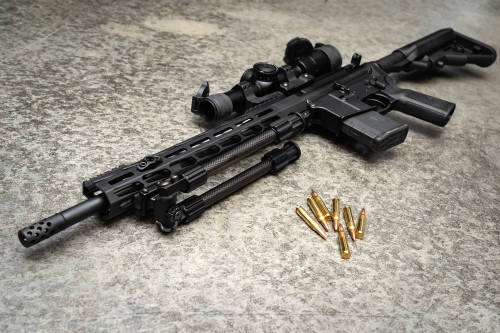
 Pro Armory Editorial Team
Pro Armory Editorial Team